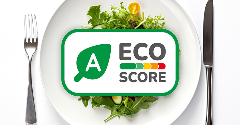News
Clear and accurate precautionary allergen labelling is vitally important, says regulatory expert
17 Jun 2022
As the UK’s Food Standards Agency looks to standardise allergen label wording, it is “vitally important” that food businesses provide consumers with clear and accurate precautionary information about potential unintended allergens in products, a regulatory expert has warned.
Despite many jurisdictions currently having no specific legislative requirements to do so, food producers also have an ethical obligation to ensure allergic or potentially hypersensitive consumers are warned about unplanned contamination with allergens, Helen Arrowsmith, regulatory affairs manager and allergen specialist for the UK-based food and drinks advisory firm Campden BRI, said in a recent blog post on the matter.

Arrowsmith noted that 8% of children and around 3% to 10% of adults globally suffer with food allergies, and many more with hypersensitivities and intolerances.
There is no widely available cure, she said, adding that the only way to prevent reactions is to avoid the food that triggers symptoms.
Several countries and regions have introduced legislation under which food producers must declare the presence of major food allergens and their derivatives on labels of prepacked foods, for instance in ingredients lists. This information is also increasingly required on non-prepacked foods, such as from caterers.
“Only a few jurisdictions, however, have specific legislative requirements relating to precautionary allergen declarations, i.e., information on the potential of unintended presence of food allergens,” said Arrowsmith – often referred to as precautionary allergen labelling, or PAL.
“It is therefore vitally important that food businesses provide consumers with clear and accurate information about the potential or known presence of substances that could cause food hypersensitivity reactions in products, to allow consumers to make informed, safe food choices,” said Arrowsmith.
Incoming developments in precautionary allergen labelling (PAL)
Furthermore, Arrowsmith stressed that work and discussions are now ongoing at national and international level about the management of food allergens, and the use of allergen threshold levels to inform allergen risk management for foods.
The discussions also cover the possible standardisation over the application and wording of PAL.
Recent works include:
- A consultation ending in with a report in March 2022 at the UK Food Standards Agency (FSA) over the provision of PAL and precautionary allergen information for many types of foods, the results of which will be used to determine the next policy steps
- An FSA guidance for small food businesses on PAL
- A Food and Agriculture Organization of the United Nations (FAO) and World Health Organization (WHO) collaboration known as The Codex Alimentarius Commission (Codex), which published a 2020 code of practice on food allergen management for food business operators.
“This work may lead to guidance on the use of PAL and/or amendments to existing Codex standards. It should be remembered that Codex Alimentarius Codes of Practice and Standards have no legal basis, however, they represent an international consensus on a specific issue relating to food quality and/or safety, and in many jurisdictions contribute to the development of relevant laws,” said Arrowsmith.
Allergen contamination sources: Just one sesame seed can be sufficient
Unintended allergens can contaminate food in the supply chain during the growing, harvesting, processing and transport of crops, for example, said Arrowsmith.
It can also enter the chain during final product manufacturing, when food products containing allergens are made on the same premises or equipment.
“Food businesses spend a lot of time, effort and money implementing allergen management practices, including controls to prevent or minimise the potential for allergen contamination,” said Arrowsmith.
“It should be considered though that very small amounts of food can cause reactions in sensitive people; for example, a drop of milk, a fragment of peanut or just one or two sesame seeds. Therefore, despite the best efforts of the food business, sometimes there remains an unavoidable risk of allergen contamination that cannot be sufficiently controlled.”
Related news

UK Government overhauls childhood obesity strategy
21 Nov 2025
The UK Government has announced a new package of measures designed to reverse the nation’s childhood obesity epidemic following the release of statistics revealing the scale of the crisis.
Read more
How younger consumers are redefining ingredient choices and rejecting brand loyalty
18 Nov 2025
Gen Z and millennial consumers’ preferences for transparency, functionality, and purpose are “redefining the very nature of consumption itself”, says SPINS.
Read more
New UPF standard hoped to offer consumers ‘coherence and clarity’
10 Nov 2025
Ingredients companies are being urged to enter “a new era of partnership and innovation” following the launch of the industry’s first non-UPF verification scheme.
Read more
Ingredient quantities mislabelled on popular protein bars, independent tests show
5 Nov 2025
Some popular protein bars contain more fat, carbs, and/or sugars than claimed on their labels, independent nutrition testing reveals.
Read more
Does promoting protein content push up plant-based sales?
27 Oct 2025
Promoting the protein content of meat-free products is a more effective sales strategy than adding carbon labels, a study of UK bakery chain Greggs suggests.
Read more
Supplement shoppers seek storytelling and science-backed suppliers
17 Oct 2025
Supplement consumers want specific health benefits that focus on prevention and personalisation, according to data from HealthFocus International.
Read more
Food fraud risks rise as brands fight economic and environmental headwinds
10 Oct 2025
Climate change, geopolitics, regulations, and demand for sustainable products are pushing up food fraud and adulteration risks, warns a world-leading food fraud expert.
Read more
The growing appeal of nutrient-dense food claims
2 Oct 2025
Nutrient-dense claims are rising as consumers reject the “empty calories” of UPFs in favour of products that provide meaningful nutrition with every calorie, Mintel data shows.
Read more
What does MAHA mean for the US nutraceutical industry?
30 Sep 2025
Industry associations have expressed mixed reactions to new policy directions on health and nutrition under the Make America Health Again (MAHA) banner.
Read more
Eco-Score labels improve consumer identification of sustainable foods
22 Sep 2025
The presence of a front-of-pack Eco-Score label improves consumers' accuracy in identifying sustainable food products from 52% to 72%, a study suggests.
Read more